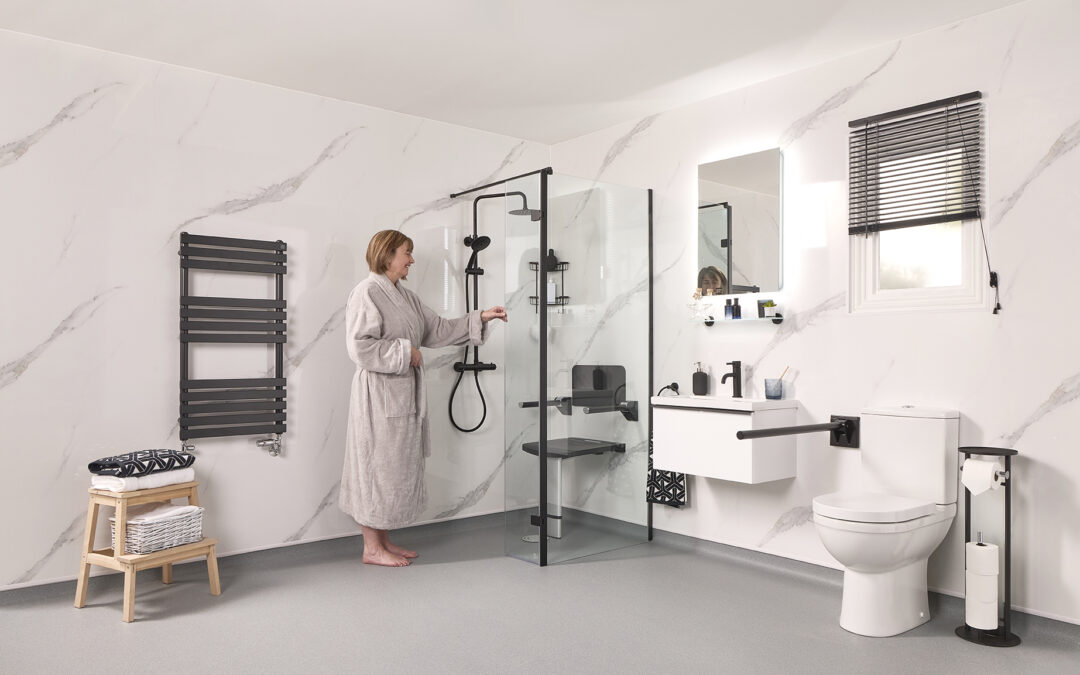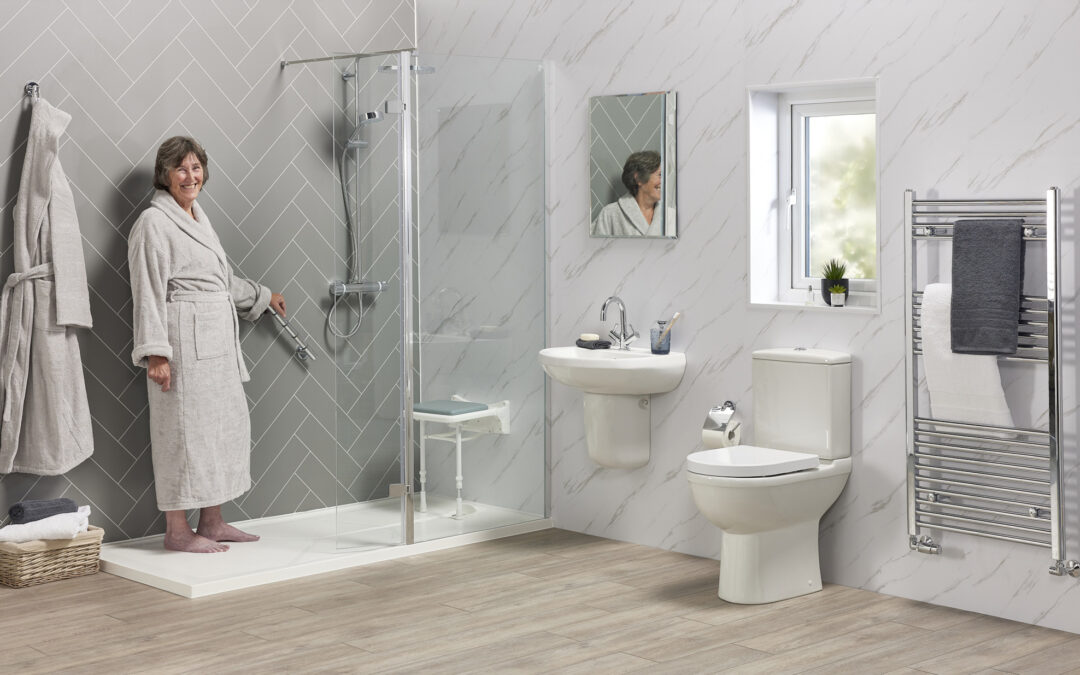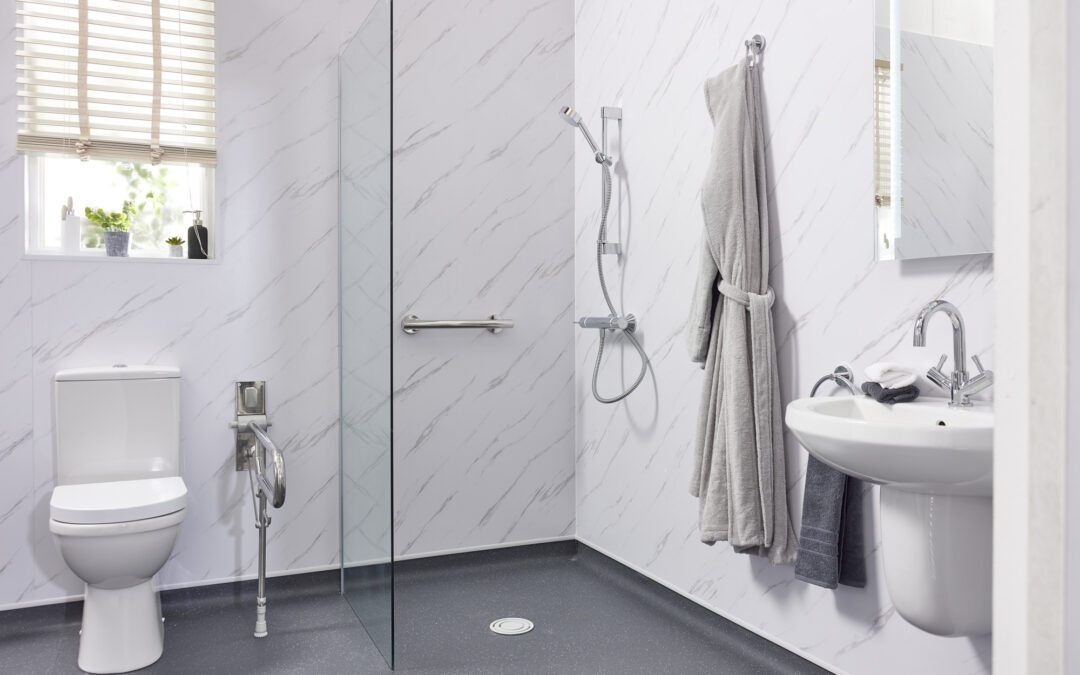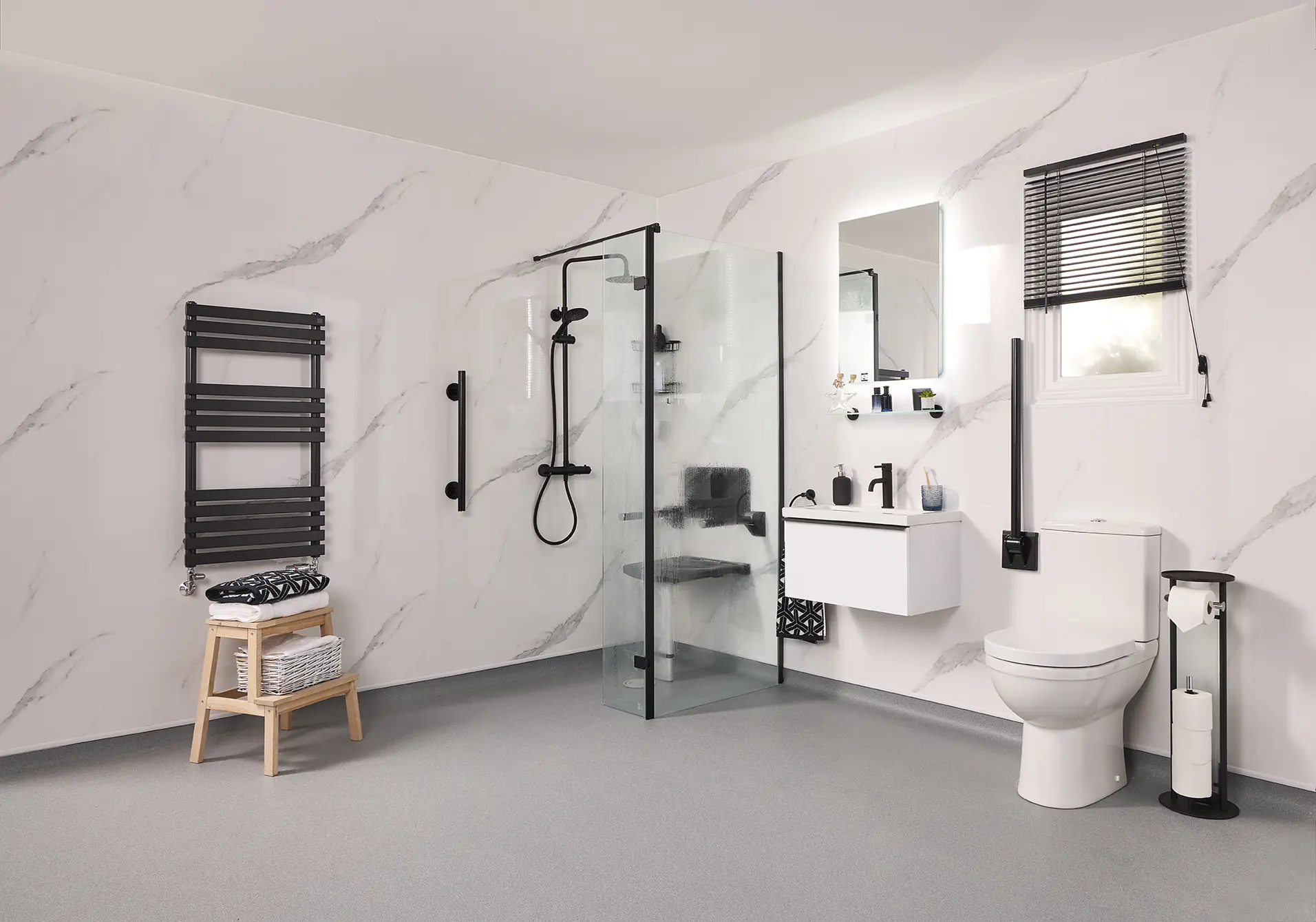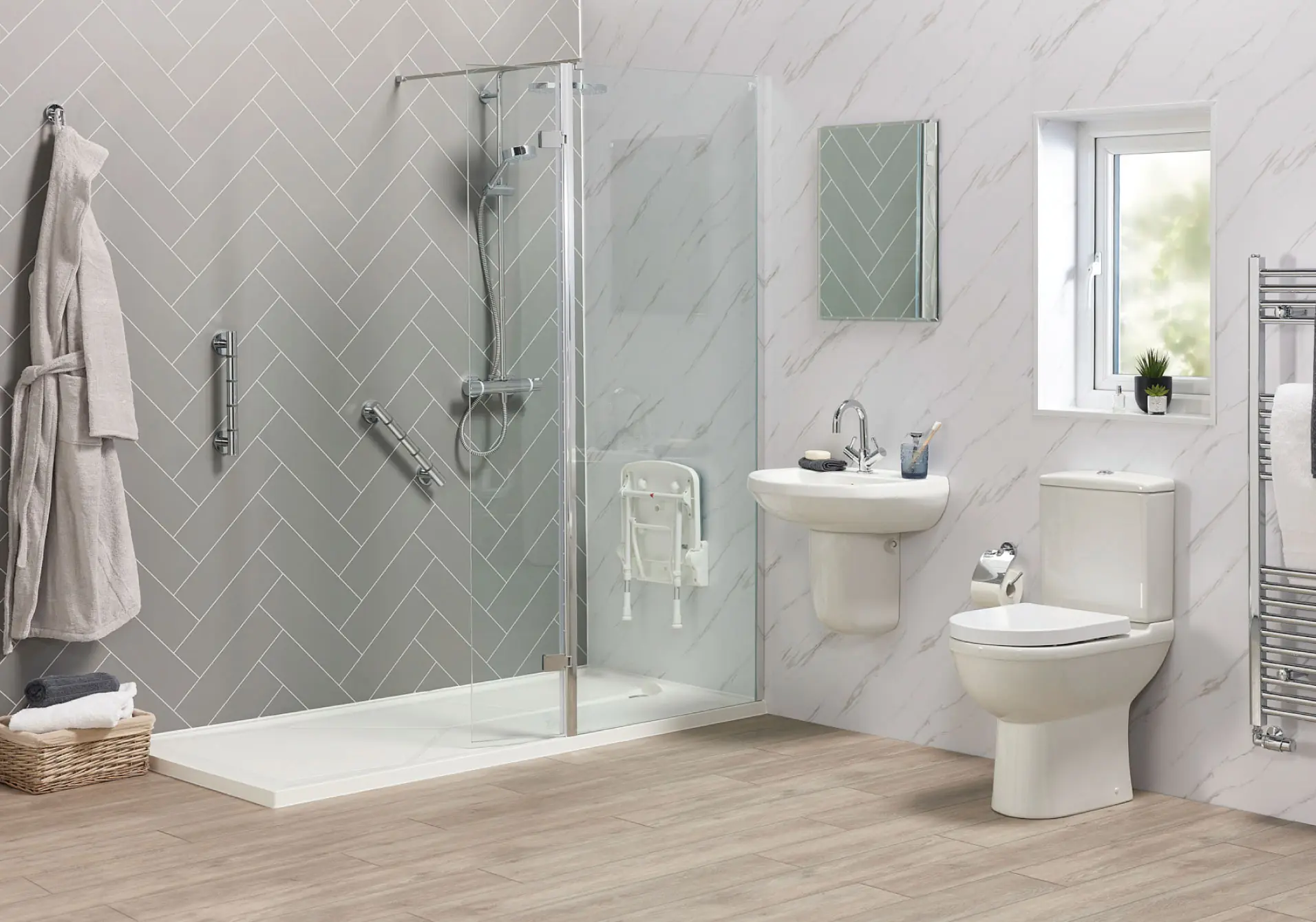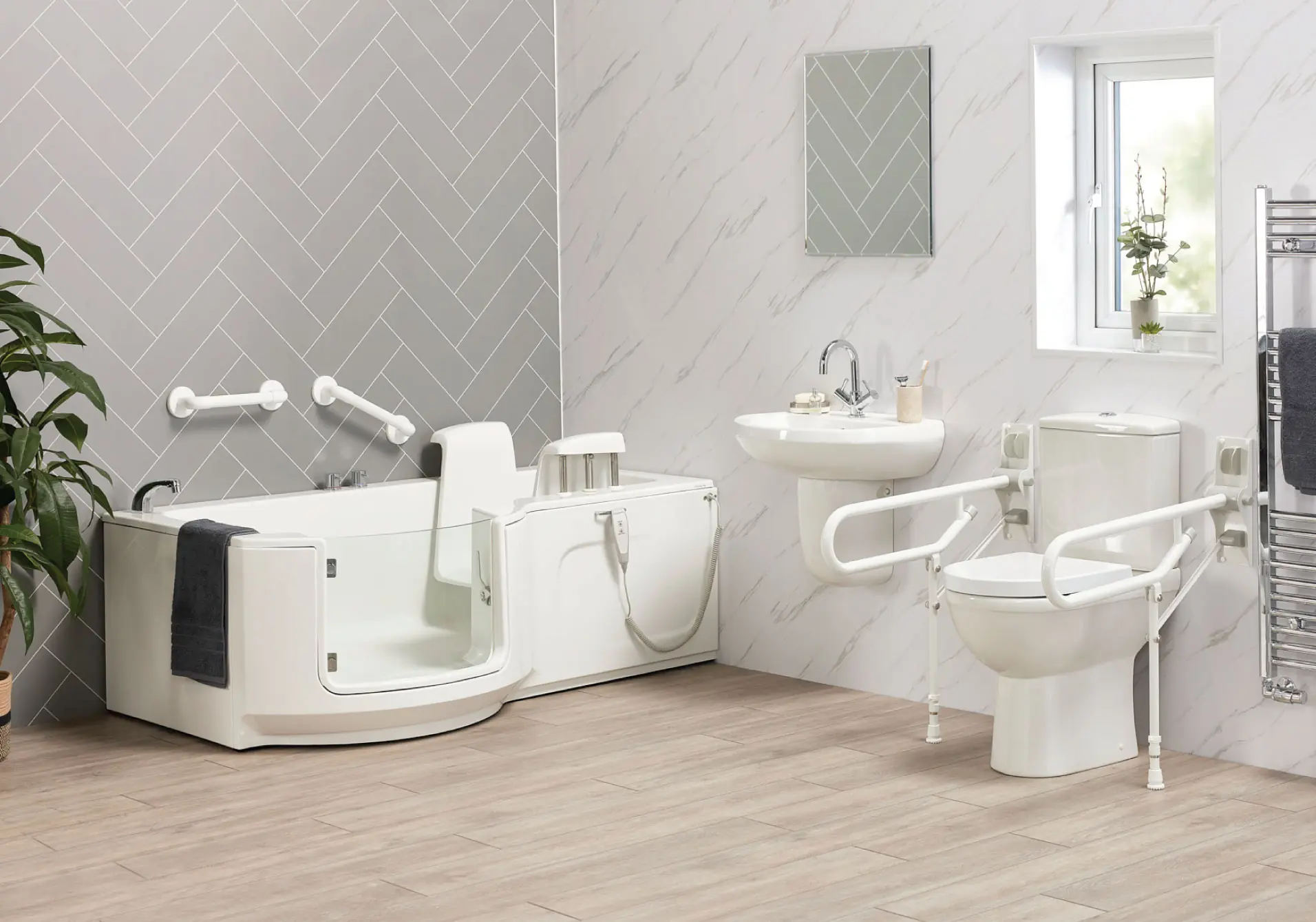Welcome to the ultimate luxury wet room design guide for disabled people! Whether you’re designing a space from scratch or renovating an existing one—our goal is to make sure that style and accessibility come together in perfect harmony.
This guide will provide all of the advice, information, and tips needed to ensure your wet room looks great while also perfectly accommodating your unique accessibility needs. So let’s get started creating something unique, comfortable, and beautiful—together!
What is a Wet Room?
A wet room is a modern approach to bathroom design that’s gaining more and more popularity. In essence, a wet room is a fully waterproofed bathroom that has open flooring where water drains away through the floor. The beauty of a wet room is the flexibility in design and the elimination of the barrier between the shower and the rest of the bathroom.
It provides a spacious and stylish bathroom space that’s easy to maintain and is perfect for those with mobility issues. Whether you’re renovating your home or building a new one, a wet room can add a touch of luxury and practicality to your bathroom design.
Catering to Disabled Needs in Bathroom Design
When it comes to designing a luxury disabled wet room, it’s important to focus on both aesthetics and functionality. The first step is understanding the individual’s unique needs and daily routine. This information will guide everything from the height of the sink to the positioning of grab bars.
Safety should never be compromised for style. Choose non-slip flooring to prevent falls and opt for showers with seamless entries to allow wheelchair accessibility. Lever taps or touch-controlled faucets can aid those with limited hand strength or dexterity.
In terms of aesthetics, consider incorporating stylish yet practical features such as walk-in showers with rainfall showerheads, underfloor heating for added comfort, and LED lighting for increased visibility. Remember, a disability-friendly wet room doesn’t need to look clinical; with thoughtful design choices, it can also look luxurious.
Always keep in mind that a luxury wet room for disabled individuals should be a blend of functionality, safety, and style, making the individual’s life easier and more comfortable whilst making a design statement.
The Intersection of Luxury and Accessibility: Key Principles
The successful design of a luxury disabled wet room hinges on seamlessly blending luxury and accessibility. Here are some key principles to guide this process:
- Harmonise Function and Form: The design should not only serve a practical purpose but also be aesthetically pleasing. Select fixtures and fittings that are both functional and stylish. For example, grab bars can be made from high-quality, attractive materials and be incorporated into the overall design, rather than being an afterthought.
- Prioritise Comfort and Convenience: From heated towel rails to adjustable shower seats, consider incorporating features that enhance comfort and convenience. These additions can greatly improve the user’s experience and add a touch of luxury to the wet room.
- Focus on Quality: High-quality, durable materials will ensure the wet room stands the test of time, both in terms of style and functionality. Whether it’s the tiles on the floor or the type of brassware selected, quality should never be compromised.
- Space and Light: A sense of space can be created in any size of bathroom through clever design and the use of light. Large, unobstructed areas and good lighting can enhance visibility and mobility, creating a spacious and inviting atmosphere.
- Adaptability: Lastly, an accessible wet room should be adaptable to meet the changing needs of the user. Designs should be flexible and incorporate features that can be easily adjusted or replaced.
Remember, a luxury wet room for disabled individuals isn’t about adding as many high-end features as possible. It’s about creating a harmonious balance between luxury and accessibility that caters to the user’s needs while embodying their personal style.
Essential Features of Luxury Wet Rooms for the Disabled
Here are some essential features to consider when designing a luxury disabled wet room:
- Non-Slip Flooring: Safety is paramount in a wet room. Choose a flooring material that offers good grip even when wet to prevent slip and fall accidents.
- Walk-In Shower: A walk-in shower with no steps or raised edges ensures easy access for wheelchair users or those with mobility concerns.
- Grab Bars: Stylish yet functional grab bars can provide necessary support and stability when moving around the wet room.
- Comfortable Seating: A waterproof seat in the shower can provide a comfortable and safe space for those who may struggle to stand for long periods.
- Lowered Sink: A sink installed at a suitable height (or a sink that can be adjusted) can make daily routines easier and more comfortable.
- Handheld Shower Head: A handheld shower head can give the user greater control and flexibility. Opt for models with different spray settings for a touch of luxury.
- Accessible Storage: Consider installing storage at a lower height for easy access to toiletries and other bathroom items.
- Underfloor Heating: Not only does it provide a warm floor to walk on, but it also helps to dry out the room quickly, reducing the risk of slips.
- Touch-Controlled Faucets: These can aid those with limited hand strength or dexterity, and add a modern touch to the bathroom.
- LED Lighting: Good-quality lighting can aid visibility while adding a touch of luxury and ambience to the bathroom. Consider installing motion-sensor lights for added convenience.
- Wide Doorways: Ensuring that doorways are wide enough for wheelchair access is crucial in a disabled wet room.
- Roomy Layout: A spacious layout allows for easy movement around the bathroom, creating a relaxed and comfortable environment.
Remember, when designing your luxury disabled wet room, each feature should not only serve a practical purpose but also contribute to the overall aesthetic and feel of the space.
Incorporating New Technologies
For those looking to incorporate new technologies into their wet rooms, the possibilities are endless. Exciting innovations in accessible bathrooms, such as smart toilets, automatic lighting, and smart shower systems, can transform the way we interact with our wet room spaces. Advances in technology have also made the installation and maintenance of these technologies simpler and more affordable.
Whether you are renovating an existing wet room or designing a brand new space, we are here to guide you through the process. Our team of experts can help you find the right technologies to suit your needs and ensure your wet room is not only beautiful but practical too.
Redefining the Future of Luxury Bathrooms
Incorporating Hydrotherapy in Wet Room Designs
Hydrotherapy is becoming an increasingly popular way to relax and rejuvenate at home. If you’re considering incorporating hydrotherapy into your wet room design, there are a few things to keep in mind:
- Space Availability: Hydrotherapy systems tend to take up more space than standard showers or tubs. Ensure your wet room has ample space to accommodate the system and still allow for easy movement.
- Water Supply and Drainage: Hydrotherapy systems need a good water supply and efficient drainage. Make sure your plumbing can handle the increased demand.
- Temperature Control: To gain the full benefits of hydrotherapy, water temperature should be easily adjustable. Consider installing a thermostatic shower mixer.
- Safety Precautions: Non-slip flooring and suitable grab bars are even more crucial when incorporating hydrotherapy due to increased water movement.
- Maintenance: While hydrotherapy systems are designed for durability, they may require regular maintenance. Ensure you’re ready for this commitment.
- Budget: Hydrotherapy systems can be costly. Plan your budget carefully and consider the long-term value it will bring to your life.
Remember, your goal is to create a luxury disabled wet room that blends functionality with indulgence, and incorporating hydrotherapy can be a step in that direction if planned meticulously.
Bathroom Solutions for Arthritis and Joint Pain
As we age, our bodies go through changes that can make everyday tasks like using the bathroom more difficult. Arthritis and joint pain can cause discomfort and make it harder to get in and out of the shower, sit down on the toilet or reach for items on a high shelf.
This is not only frustrating, but it can also be dangerous if we lose our balance and fall. Fortunately, there are different products available to help make managing joint pain in the bathroom safer and more comfortable. These include:
- Raised Toilet Seats: These can help reduce strain on the knees and hips while sitting down or getting up from the toilet.
- Shower Stools and Chairs: Sitting while showering can take pressure off of painful joints. Look for models with non-slip surfaces and adjustable height options.
- Grab Bars: Strategically placed grab bars can provide necessary support and stability when moving around the wet room.
By incorporating these simple solutions into your luxury disabled wet room design, you can make daily routines safer and more comfortable for those with arthritis or joint pain.
Conclusion
All in all, style and accessibility don’t have to be mutually exclusive when it comes to luxury wet rooms specifically designed for individuals with disabilities. By correctly incorporating both elements into the design, you can create a functional space that looks beautiful while simultaneously meeting the individual’s needs.
Speak to a Professional
Ready to transform your bathroom into an accessible yet luxurious space? With our innovative wet room designs, we’re committed to enhancing comfort and independence for everyone.
Get in touch with us today to explore our range of products and find the perfect solution for your needs. Don’t compromise on style or accessibility – with EA Mobility, you can have both. Start your journey towards a more comfortable, independent future today with a free brochure.




